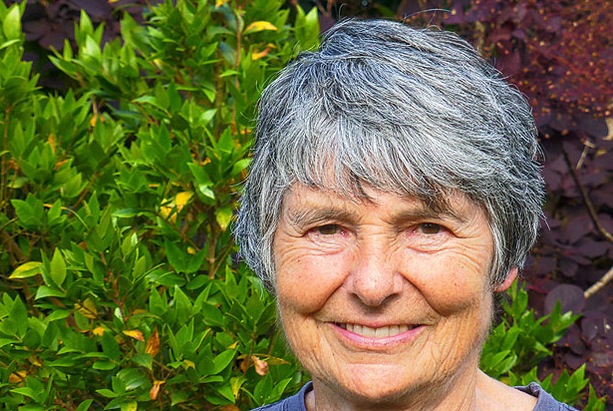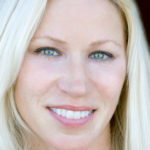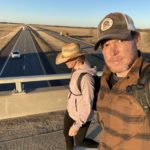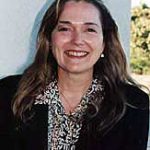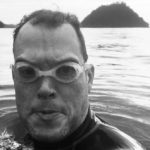Hilary Bradt co-founded Bradt Travel Guides. She and her (ex) husband George, self-published Backpacking along Ancient Ways in Peru and Bolivia in 1974, in Boston, and she went on to build the company up to be a recognized, and award-winning brand. Her books include ten editions of the Bradt Guide to Madagascar and the anniversary edition of Trekking in Peru
, as well as two narrative books describing a journey on horseback through western Ireland, Connemara Mollie
, and Dingle Peggy
. She was awarded an MBE by Queen Elizabeth in 2008, and now lives in semi-retirement in Devon, England.
How did you get started traveling?
I didn’t go abroad until I was 16 (family holidays were spent eating rain-soaked sandwiches in Scotland or Wales), and that was to Germany to stay with my pen-friend. I hated it. So I don’t remember any germ of enthusiasm for Abroad until I was a student and traveled with a couple of friends by train to Greece, taking it in turns to sleep in the luggage rack during the three-night journey. The thrill of sunshine, strange food, incomprehensible language, ancient culture, and the freedom to decide ourselves what to do each day set the scene for the rest of my life.
In 1963 my girlfriend and I hitchhiked to the Middle East (we’d already practiced with that first trip to Greece). We spent three months traveling solely by the power of thumb, through Europe to Lebanon, Syria, Jordan and Israel, then Turkey and back to the UK. The whole trip cost 90 pounds (around $150). I was 21 and it taught me self-reliance, courage, flexibility and political awareness. Most important of all, it was a lesson in the inherent goodness of most people, whatever their nationality. After that, the desire to travel increasingly took over my life.
How did you get started writing?
My writing skills were developed through letters home. Throughout my long travels in the 1960s and ’70s I wrote regularly to my parents, pages and pages of descriptive, often humorous travel writing. They kept all the letters and I now have them. Some of them are quite good!
What do you consider your first “break” as a travel writer?
My first guidebook was written and self-published in 1974, but I don’t consider it a particularly brilliant showcase of my writing! Far more significant is the first article I had published (in 1976) in a British women’s magazine, She. I wrote it jointly with my husband and we called it “South American Omelette”. We wanted somehow to distill 18 months of travel in South America into one article and hit on the idea of describing the different eggs that we’d eaten during our travels: quail, penguin, rhea (South American ostrich) and (very) rural hen. I’ll never forget the thrill of that first acceptance letter. It gave me the confidence to approach other editors and I’ve written for newspapers and magazines ever since, as well as the guidebooks that have been my bread and butter.
As a traveler and fact/story-gatherer, what is your biggest challenge on the road?
Being accurate with boring stuff such as addresses and phone numbers. My writing has always been divided between guidebooks and descriptive writing for articles. There’s quite an overlap, with the best books containing evocative writing to pull the reader in, along with the hard facts that should make a guidebook an essential companion. I’m not naturally a details person, so have to make a big effort with that side of things, whereas I love descriptive writing.
What is your biggest challenge in the writing/publishing process?
I am, of course, hugely lucky in that as part-owner and director of Bradt Travel Guides I ‘have’ a book publisher. But writing articles for newspapers and magazines is becoming increasingly competitive and it’s much harder these days to place a piece. My biggest challenge is not to become discouraged by rejection — it never gets easier, no matter how long you’ve been at it.
What is your biggest challenge from a business standpoint?
Book sales have dropped dramatically in the last few years, particularly in the US, and although our particular brand of niche publishing has been continuously successful (we specialize in guides to unusual destinations) we have to weigh up the potential profitability of suggested new titles very carefully. Gone are the days when I could publish pretty much whatever I wanted. It means frequently having to turn good writers down, and I hate that.
Have you ever done other work to make ends meet?
Of course! My original profession was occupational therapy — that’s what brought me to the US in 1964. I wanted to earn enough money to travel to South America, having become obsessed with the Incas. Then, during the first two decades of running Bradt Travel Guides, I worked as a tour leader in South America, Africa, and Madagascar, mainly for Wilderness Travel of Berkeley. This not only brought me much-needed income, but ensured that I could update my guidebooks and also be close to ordinary travelers so knew their interests and foibles. Very useful for a writer, and it has made me some life-long friends.
What travel authors or books might you recommend and/or have influenced you?
I’ve been a life-long fan of the Irish author, Dervla Murphy. Her disregard for what most people consider essential comforts can be jaw-dropping, and enables her to live or travel for prolonged periods with remote rural people. She has infinite curiosity and a genuine interest in the lives of others and holds passionate political beliefs. She is also a very good writer. Single titles that stand out as being either hugely enjoyable or influential include Eric Newby’s A Short Walk in the Hindu Kush which is perhaps the best example anywhere of self-deprecating British travel writing, and the deeply moving and utterly memorable novel by Peter Matthieson At Play in the Fields of the Lord
, describing the clash between missionaries and an Amazonian tribe. It’s fiction but every word rings true. And of course there’s every Brit’s favorite American writer, Bill Bryson.
What advice and/or warnings would you give to someone who is considering going into travel writing?
Read voraciously. The more good travel writing you read, the more you will see what works, how a good author can ‘paint the picture’ so skillfully that you are watching a mental movie of everything they describe. If you need to read a sentence twice either to understand it or because your attention has wandered, then the writer isn’t doing their stuff. Notice the shape of an article. There are certain rules that all writers need to obey; these are not hard to learn, either from books or a travel-writing course. And write something that people want to read: these days a travel blog has replaced my letters home, but it’s important that you have a reader in mind when you’re writing, rather than the old ‘Dear diary’ approach which tends to produce flat, unexciting fact-laden prose. When you’re traveling, write every evening however tired you are, pulling together all the observations and experiences of the day. Note down snatches of dialogue as you hear them. Carry a notebook with you at all times.
What is the biggest reward of life as a travel writer and publisher?
Working from home, traveling to wonderful places, meeting fascinating people. No surprises there!

